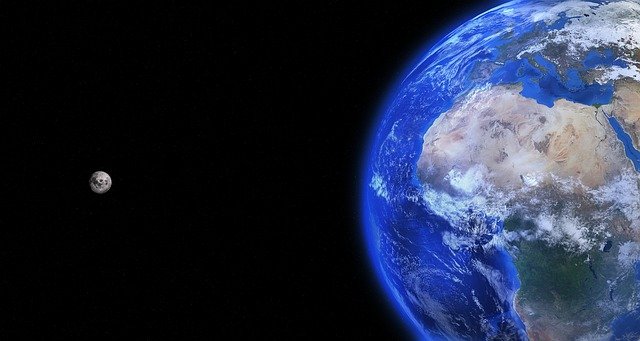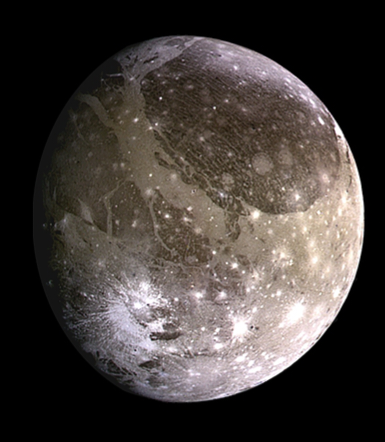*This post may contain affiliate links. This means we may make a commission if you purchase an item using one of our links*
The main differences between Earth and Ganymede include their size where Earth is 12,742km whilst Ganymede has a diameter of 5,268km which also makes it the largest moon in our solar system, Earth has a far thicker atmosphere and has all the components necessary for life whilst Ganymede’s atmosphere is practically non-existent and does not satisfy any of the criteria necessary for life to bloom.
There are numerous other differences between these two celestial bodies so, continue reading if you want a more detailed look at each entity, along with their similarities and differences.
What Is The Planet Earth?
Table of Contents

Our home planet Earth is the 3rd farthest planet from the Sun, made up of a mixture of water and solid rock like objects, and is the only entity in our solar system known to allow intelligent life forms like ourselves to exist.
Earth’s distance of 152 million km from the Sun has allowed it to remain within the goldilocks zone and as a result, the planet has been able to thrive for millions of years. It orbits the Sun in a circular pattern, much like all the other planets, has only one natural satellite which would be the Moon and is a terrestrial planet to boot.
In regards to its diameter, Earth is the 5th largest planet with a diameter 12,742km.
Earth’s temperature ranges based on the region you’re located where it can be from as low as -94 degrees Celsius in Antarctica to as high as 50 – 55 degrees Celsius in Tunisia.
As for the planets composition, it consists of the crust, the mantle, the outer core and the inner core, where the inner core is the hottest element within the Earth reaching temperature in excess of 5,200 degrees Celsius.
In regards to some of its most unique features, Earth is around 71% water, has an atmosphere consisting mostly of oxygen and nitrogen that is also made up of 5 main layers, with the highest to lowest being the troposphere, stratosphere, mesosphere, thermosphere and exosphere.
A day on Earth is 24 hours and an orbital cycle around the Sun takes 365 days to complete. It’s axial tilt is more distinct at 23.5 degrees to the right.
What Is The Moon Ganymede?

Ganymede is the largest of the Galilean moons – and the largest moon in our entire solar system – first discovered on 7th January 1610. The surface of this icy world is frozen and covered by two main types of landscape: young, light regions and old, crater-filled terrain. And these darker areas seem to contain a number of organic materials.
Using the Hubble Space Telescope, astronomers have found evidence of an oxygen-based atmosphere. Still, it is far too thin to support any living organisms that we know of. Based on this, it’s unlikely that Ganymede hosts life as we know it.
Estimates place Ganymede at around 4.5 billion years old (the same age as its planet, Jupiter), and its average distance from the Sun is approximately 778 million km.
Its diameter is 5,268km, making it larger than the planet Mercury. Despite this, Ganymede only possesses half the mass of Mercury at 1.48 × 10^23kg, so it is still classified as a low-density object.
Ganymede takes seven days to orbit its planet at an average distance of 665,00km, and the temperature varies from minus 112 to minus 193 degrees Celsius. In regards to the moon’s core temperature, that would be around 1,226 – 1,446 degrees Celsius.
Among the fascinating features of this ice moon is its magnetosphere. While many planets possess a magnetosphere, no other moon in our solar system shares this trait.
Measuring the changes in the magnetic fields of Ganymede and Jupiter allowed scientists to predict that salt water lies beneath the surface of this freezing world.
However, this is insufficient to support life when you factor in the other elements of this giant moon. In contrast to Europa, the rocky layer of Ganymede is not directly below the ocean, so life would have a difficult time forming both above and below the ice.
In addition, the thick layer of ice on the moon’s surface would make internal, water-based life challenging for scientists to detect.
How Are Earth And Ganymede Similar?
Earth and Ganymede do share a few similarities, which in this case includes the following:
- Both have a hotter central core.
- Both have a rocky, terrestrial surface.
- Both are spherical in shape.
- Neither have rings surrounding them.
- Both are part of the same solar system.
- Both have a magnetosphere.
Differences Between Earth And Ganymede
In regards to the differences between the two, they include the following:
- Earth is the larger of the two with a diameter of 12,742km whilst Ganymede’s diameter is 5,268km.
- Ganymede is a natural satellite, whilst Earth is a planet.
- Earth has 1 moon orbiting it whilst Ganymede has 0.
- It takes Earth 365 days to orbit the Sun whilst Ganymede orbits it in 12 years.
- A day on Earth takes 24 hours whilst a day on Ganymede is 7 days and 3 hours.
- Ganymede orbits Jupiter elliptically whilst Earth orbits the Sun in a nearly circular pattern.
- Ganymede is tidally locked to Jupiter whilst Earth it is not tidally locked to anything.
- The average temperature of Earth is 13.9 degrees Celsius whilst Ganymede’s temperature ranges between a very chilly -112 to -193 degrees Celsius.
- In regards to their core temperatures, Ganymede’s is between 1,226 -1,426 degrees Celsius whilst the Earth’s core is 5,200 degrees Celsius.
- Earth’s atmosphere is far thicker than Ganymede’s, which is practically non-existent.
- In regards to gravity Ganymede’s is 1.428 m/s² whilst Earth’s is 9.807 m/s².
- Earth’s density is 5.51 g/cm³ whilst Ganymede’s is 1.94 g/cm³.
- Earth is able to support intelligent life unlike Ganymede and practically all other entities in our solar system.
- Ganymede is lower in density and smaller meaning its mass is lesser also. As a result Ganymede’s mass is 1.48 × 10^23 kg whilst Earth’s mass is 5.972 × 10^24 kg.
- Earth’s axial tilt is 23.5 degrees whilst Ganymede’s tilt is 0 – 0.33 degrees.
Summary
Despite some of their similar features such as the general terrestrial composition, the magnetosphere that surrounds both, the general spherical shape and the fact both are part of the same solar system, they both are still very different from one another.
Whether it be in regards to size, mass, density, the length of their days, the thickness of each object’s atmosphere and their titles where one is a natural satellite and the other a planet. As a result the two may have some common features but, are built distinctly and in turn function very differently from one another.

